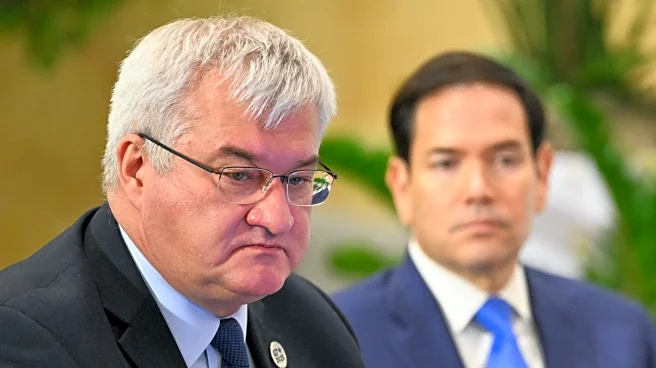What's Happening?
Spotify is set to introduce music videos on its platform in the United States in the coming weeks. This follows a successful beta launch in 12 international markets, including the U.K., Germany, and Italy,
and a subsequent expansion to 85 additional markets. Users will be able to switch between audio and video with a simple tap, although it remains unclear whether this feature will be available to all subscriber tiers or exclusively to Premium users. The move comes after Spotify signed an audiovisual direct-licensing agreement with the National Music Publishers’ Association, allowing NMPA members to opt into licensing agreements for expanded audiovisual rights in the U.S.
Why It's Important?
The introduction of music videos on Spotify's platform represents a significant expansion of its streaming capabilities, positioning it as a more comprehensive entertainment service. This development could potentially increase user engagement and attract new subscribers, particularly those interested in visual content. By offering music videos, Spotify is directly competing with platforms like YouTube Music, which already provides a similar feature. The expansion may also benefit artists and publishers by providing them with additional avenues for content distribution and monetization, thereby enhancing their reach and revenue potential.
What's Next?
As Spotify rolls out this feature in the U.S., it may face reactions from competitors and stakeholders in the music industry. The company might need to address licensing and rights management challenges, especially if the feature is extended to all subscriber tiers. Additionally, Spotify's expansion into video content could prompt other streaming services to enhance their offerings, potentially leading to increased competition in the market. Users and artists alike will be watching closely to see how Spotify's new feature impacts the overall streaming landscape.
Beyond the Headlines
Spotify's move into music videos could have broader implications for the streaming industry, potentially influencing how content is consumed and monetized. This shift may encourage other platforms to explore similar integrations, fostering innovation and diversification in digital media. Moreover, the expansion of audiovisual content could lead to new partnerships and collaborations between streaming services and content creators, reshaping the dynamics of the entertainment industry.













